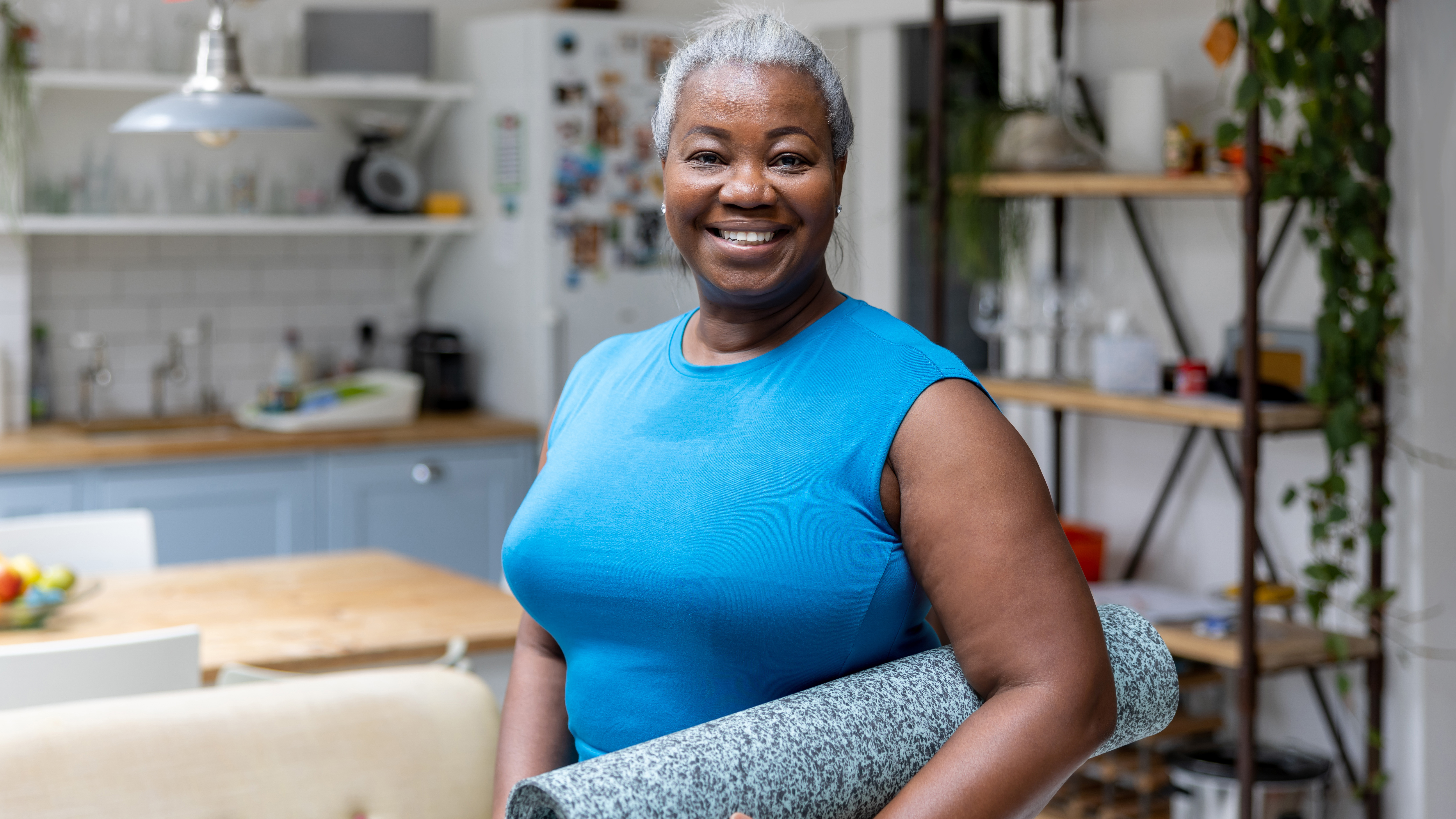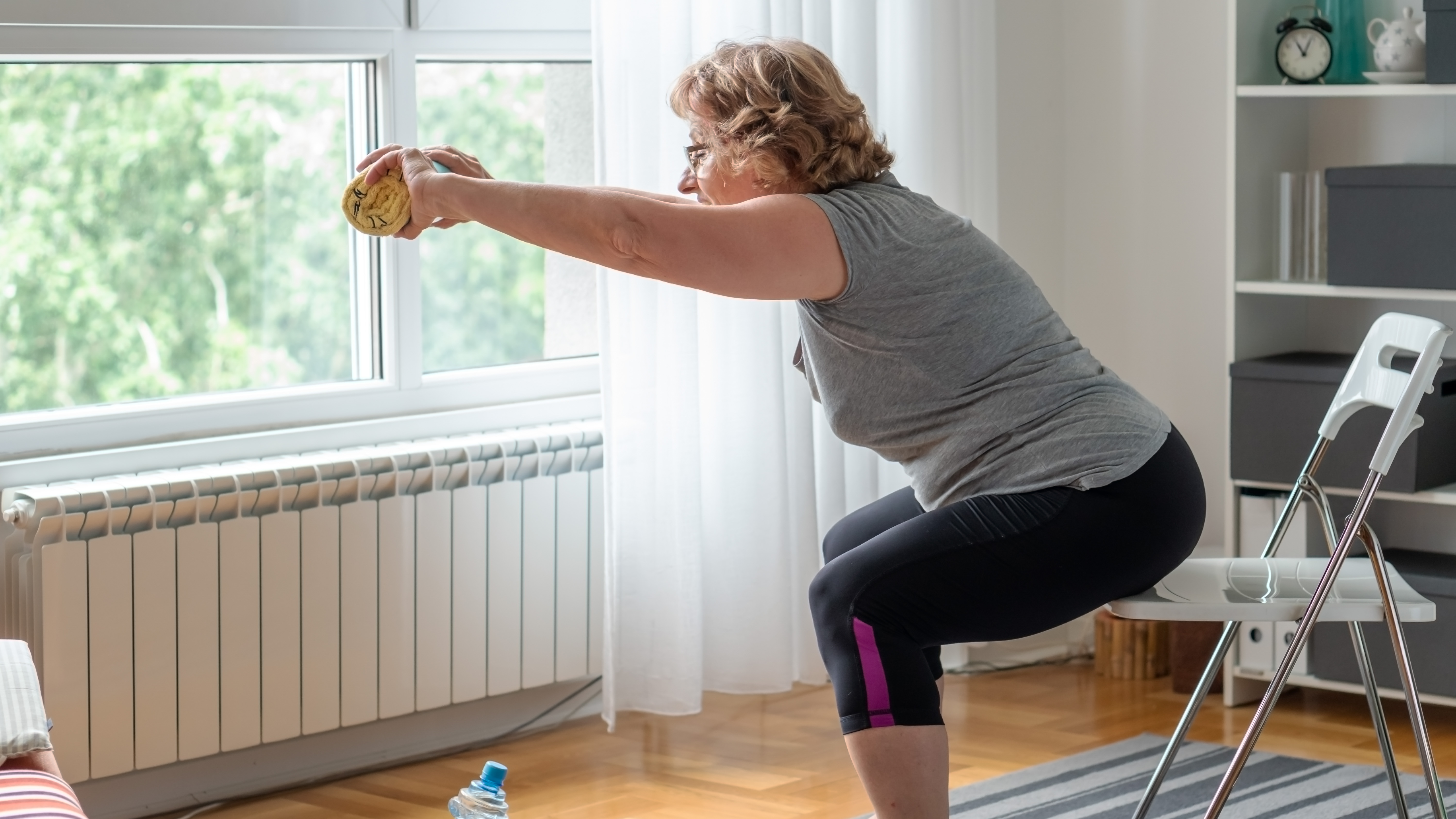A physical therapist says this is the one move you should be doing if you want to minimize the effects of aging on your body
“This is the number one most important thing for life longevity”

Your body changes as you age. Things like back pain, stiff hips, and a lack of balance can impact your day-to-day life, and you might find getting off the couch a bit harder.
Laura Wilson, physical therapist and founder of The Swiss Touch, explains that this is often down to a decline in muscle mass.
“We naturally begin to lose it from our 30s onwards, a process known as sarcopenia,” she says. “This decline affects strength, balance, metabolism, and even bone health.”
You can fight back against this natural decline with strength training. And Wilson says there's one strength-boosting exercise she recommends above all others for longevity: the squat.
How to do a squat
“Squats are a highly effective way to work multiple large muscle groups at once, helping to preserve muscle strength,” says Wilson.
The move is easy to execute, but doing it with proper form will help you get the most out of the exercise.
How to do it
- Stand tall with your feet shoulder-width apart, toes pointing slightly outward.
- Slowly lower your hips as far as you can while keeping your weight in your heels and your knees pointing outward, in the same direction as your toes.
- Pause when your thighs reach parallel to the ground or lower.
- Push through the feet, keeping the torso upright, to return to standing.
Wilson recommends repeating the move 8-12 times and doing three rounds.
Start your week with achievable workout ideas, health tips and wellbeing advice in your inbox.
Take a look at our full beginner's guide to squats for more tips and tricks.
Why the squat is the best exercise for future-proofing the body
A post shared by alice porter | health & fitness journalist (@aliceinwellnessland__)
A photo posted by on
The squat is a functional exercise, which mimics everyday movements like sitting down and standing up .
“By strengthening these natural movement patterns, we build strength, stability, and mobility that directly support our daily life,” says Wilson.
The exercise strengthens muscles in the core, hips, back, and shoulders, all of which are important for maintaining an upright, well-aligned posture.

“Good posture helps to distribute load evenly across joints, supports optimal breathing and circulation, and reduces the risk of musculoskeletal pain,” explains WIlson.
In order to improve muscle mass, your squats should feel challenging. If bodyweight squats feel easy, try holding a weight while doing them.
Wilson also recommends trying single-leg squats to help with balance and co-ordination.
How to do single-leg squats
- Stand tall on one leg, with your opposite foot wrapped round the back of your leg or stretched out in front of you.
- Place your hands on your hips or stretch your arms out in front of you. You can also hold on to a wall or fixed surface for balance.
- Engage your core and slowly bend the standing leg, lowering your hips down as if sitting into a chair.
- Descend as far as you can, maintaining proper form.
- Push through your heel to return to standing.
- Aim for six repetitions.
You can use a chair for this movement if you find it challenging. Place the chair behind you and lower down using one leg, then stand up with both legs and repeat.
The benefits of single-leg squats
“Single-leg squats are particularly valuable because they challenge balance, coordination, and proprioception, which is our sense of body position in space,” Wilson explains.
Aligning the body with the brain is particularly important as we age, as neurological control naturally declines over time which can increase our risk of falls, according to Wilson.
“Training movements that improve balance and coordination enhance our ability to stay steady on our feet and react quickly when needed,” she says.
Alice Porter is a freelance journalist covering lifestyle topics including health, fitness and wellness. She is particularly interested in women's health, strength training and fitness trends and writes for publications including Stylist Magazine, Refinery29, The Independent and Glamour Magazine. Like many other people, Alice's personal interest in combining HIIT training with strength work quickly turned into a CrossFit obsession and she trains at a box in south London. When she's not throwing weights around or attempting handstand push-ups, you can probably find her on long walks in nature, buried in a book or hopping on a flight to just about anywhere it will take her.

